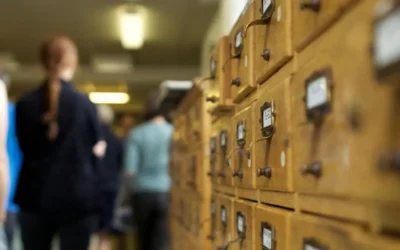Art transport insurance is a type of insurance that covers the risks of damage, loss, or theft of artworks during transportation – generally for the purposes of a loan. This insurance is specific to collections that are in transit. Depending on your policy, it may cover you only while the objects are in movement, or it may cover you throughout the period of the loan – from the moment the object leaves your institution until the time it comes back. Generally, the insurance associated with a loan will be covered by the borrower and it can apply to both domestic or international shipments as well as different types of transportation such as air, sea, road, or even rail.
Art transport insurance is different from other types of property insurance because it takes into account the unique characteristics and value of artworks. Artworks are often irreplaceable, fragile, sensitive to environmental conditions, and, importantly, subject to fluctuations in market value. Therefore, insurance policies need to be tailored to the specific needs and circumstances of each artwork and each shipment. If you are not a registrar, director or collections manager with loans experience, you may not know a lot about art transport insurance. Indeed, there may be things you don’t know you should know. So here are 7 things you should definitely know.
1. What are the most common risks during art transport?
Art transport insurance is necessary because transporting artworks involves many risks that can result in damage, loss, or theft. Some of the common risks, in order of likelihood, include:
- Accidents or collisions during transportation
- Improper handling or packing of artworks
- Mechanical damage caused by large and/or sudden environmental fluctuations
- Fire, water, or weather damage
- Customs delays or confiscation
- Theft or vandalism during transit or storage
- War, terrorism, or civil unrest
These risks can cause significant financial losses for the owners or borrowers of the artworks, as well as reputational damage for the lenders or institutions involved. Moreover, these risks can also affect the cultural heritage and artistic value of the artworks, which are often priceless and irreplaceable. Art transport insurance will not only be essential for protecting the interests and liabilities of all parties involved in art loans and exhibitions, but it can also provide peace of mind and confidence for collections care professionals who are entrusted with the responsibility of caring for collections.
2. What will (and will not) be covered by art transport insurance?
This is of course dependent on your specific policy. However, make sure you read your fine print before you sign. While the purpose of your art transport insurance will be to cover any physical damage or loss of the object during transportation, it might also include conservation and restoration costs in case of damage and even compensation for the loss of value or marketability of the artwork due to damage. In some cases, it might cover the costs of legal fees or claims arising from disputes or litigation related to the shipment or the damage itself.
When it comes to exceptions and limitations, be aware that many of the following may be specific exclusions mentioned explicitly in your policy:
- Wear and tear or gradual deterioration of artworks
- Inherent defects or flaws in artworks
- Damage caused by insects, rodents, mold, or mildew
- Damage caused by improper packing or handling by the insured party. E.g. accidental forklift damage
- Damage caused by intentional acts or negligence by the insured party
- Damage caused by war, nuclear radiation, or radioactive contamination. (If you are based in the US and the damage is caused by acts of terrorism, you may be eligible for TRIP.)
Note that damage caused by improper handling and packing will be either explicitly covered or not covered. This will depend on who does the packing for you. In those cases where you have hired a professional fine arts transportation company to pack your art, it is common for them to offer the insurance policy in their service. This makes it much easier for you as the same entity will be both ensuring safe packaging and insuring your collections during transport. Issues will be more likely to arise when the insurer cannot take responsibility for the quality of the packing and can therefore point to negligence to deny your claim. Take care to pick a fine arts transport company you can trust. Here’s an article we wrote on what to look for when picking a fine art transportation partner.
However, if you decide not to hire another company be sure that you are following best practices to handling and packing objects. If you are in doubt or want a refresher why not have a look into the National Park Service Museum Handbook, Part I, Chapter 6: Handling Packing and Shipping or the factsheet Signposts to Collections Care: a self-assessment pack for museums from the South West Museums, Libraries and Archives Council in the UK.
In general, make sure you are aware of your policy exclusions so you can take extra care with those particular types of risks. Don’t miss our other article on what to check for.
3. What is a policy limit?
The one-line answer to this is the maximum amount of money you will receive when you file your claim. Generally speaking, you want to make sure that your policy limit is not below the value of the works you are transporting, or you would be underinsured and unable to cover the losses of your total damage. For more details, check out this blog post by Huntington T. Block. Just like with your auto and home insurance, another thing you should know about when you get your insurance is any potential deductible you have to pay before the claims come into effect.
4. What is cyber liability insurance?
When you are preparing for a loan, you are probably putting together a lot of valuable, sensitive information. This may include, but is not limited to, the value of the artworks being transported, the name of the fine arts transportation company, the names of the truck drivers, overnight stopping locations during transportation, the object codes and even storage location. You are then taking all this valuable information and sending it to all relevant colleagues during your coordinations. This could be done securely if you have a larger institution with IT systems in place. Or, more likely, it will be done with unencrypted files, or editable PDFs and free email services.
At this point, you are very much in danger of being hacked. Once you have been hacked (and all it takes is a colleague clicking the wrong link), your information could be held for ransom (like what happened to the British Library in October 2023), lost forever, or used to plan a swashbuckling theft in true Hollywood style. Although this last scenario is the least likely, it is not entirely impossible. At this point, your regular insurance may say that this is the result of negligence and refuse to cover your claims. So, make sure you look into either a) coverage for damage related to cyberattacks or b) secure ways of exchanging information. Either way, make sure you are aware of the risks and find the explicit limitations to your art transport insurance policy.
5. How much are your loan objects worth?
It turns out this is not a straightforward number. According to this article by Huntington T. Block on the value of appraisals, object value will depend on the tax code, effective dates and use of value sought for the object: the two main types of value for museum appraisals are Fair Market Value (FMV) and Replacement Value.
- In the FMV case, appraisers have to use as reference the market value where the property would be most likely sold. This is the kind of value used for calculations related to income tax purposes. It is the price that the object would sell for on the open market.
- Replacement Value, on the other hand, is the amount used for insurance purposes and it is “the amount it would cost to replace an item with one similar and like quality purchased in the most appropriate marketplace within a reasonable amount of time.” (International Society of Appraisers). The Replacement Value itself can have different variations depending on whether you go for a comparable or new cost. You can check those two definitions in the same ISA link provided above.
Make sure that when you get your insurance policy, you find out which of the two values is referred to. The FMV will refer to the object on its own while the Replacement Value actually includes logistics and accessory costs (e.g. reframing a damaged painting). Also make sure that the objects due to go out on loan have either a relatively recent appraisal or at least an accurate one. Remember that both market and replacement values can differ wildly depending on market conditions. The last thing you need is for your objects to end up being underinsured because their appraisal values are outdated and too low.
If you are in need of a general collection valuation instead of an item-by-item appraisal, take this advice from the Library of Congress for libraries: “group items into categories and calculate an average value for each category. Generally, the better categorized the collection, the more accurate the values… To arrive at an accurate estimate of value, however, the source figure must be used in conjunction with the number of volumes by subject and format in each library location.” They even have some tables with value estimates and a link to where you can get price estimates.
6. Are you covered from beginning to end?
Imagine you have insurance for your museum that covers your objects while they are under your care, but not while on loan because you’ve never really done loans before, so you never needed that. This means that you have two options. Either you extend your current insurance to cover objects while they are also on loan, or you need to get separate art transport insurance as the need arises.
So, let’s imagine you do that second one – and most likely the borrowing institution pays for it. But the policy they get only covers the objects while they are literally in transit and not while they are at the borrowing institution. You assume that your borrowing institution obviously has insurance that covers loaned objects.
And then something happens, and it turns out they don’t, and the loaned objects are not being covered by anyone at all because they are outside the original owner’s facilities, they are not being moved anymore, and they are not part of the permanent collections of the borrowing institution. Oops.
Make sure that you secure temporary insurance coverage if objects are not fully covered while they are outside the facilities of the owning institution. This is one of those clauses you can’t afford to miss. If in doubt, look into “nail to nail” or “wall to wall” insurance.
7. International loans are a different beast
When artworks cross international borders for exhibitions or loans, the complexity of insurance requirements intensifies. Different countries may have varying regulations and standards for art transport insurance. Institutions and collectors must adhere to these regulations to ensure seamless cross-border movement while maintaining comprehensive insurance coverage. Although a bit old, the International Council of Museums has a set of Guidelines for Loans (1974) that might help you make sure some checklist items are not forgotten.
Don’t forget that when you are planning for insurance for international loans, among all the other regular concerns, you must also be aware of the risk of seizure. Even immunity from seizure might not always help you if the case goes all the way up to the Supreme Court. Remember that while many heritage institutions in the west are registered charities, many comparable institutions in the rest of the world are state-affiliated entities whereby any issues will directly affect diplomatic relations and touch upon issues of state sovereignty. Read more about these cases in this interesting article on Restitution of Cultural Objects Taken During World War II. Being fully aware about any risks related to the provenance and ownership history of the objects you intend to loan will impact your insurance decisions – or perhaps even your object list! Make sure you know what you are getting into because long legal battles are not cheap and may not be covered in your policy either.
Conclusions
We hope that the 7 tips we have given you do not put you off loans! Sharing collections is an excellent practice which allows heritage institutions to display collections to people all over the world who may not otherwise have had the opportunity to view them. Insurance during art transport is a key element of loan paperwork and must be both well-reviewed and well-understood to ensure a successful experience. Generally speaking, make sure you read the fine print and understand what you are getting and how to file your claims if it becomes necessary. Keep copies of your insurance policy in different locations. If at all possible, get an insurance broker to help you. Ideally, make use of your fine arts transport service as they will have more experience and maybe even their own insurance department. Whenever possible, consult with your colleagues. Registrars and museum lawyers are great people to ask about loan paperwork and insurance. If you are not sure where you may find one, don’t be afraid to post in the Community.
If you have any questions about environmental monitoring, integrated pest management, or just want to talk about preventative conservation, please reach out to us! Don’t forget to check out our blog or join our community of collections care professionals where you can discuss hot topics, connect with your peers or even take a course to get familiar with the Conserv platform.




